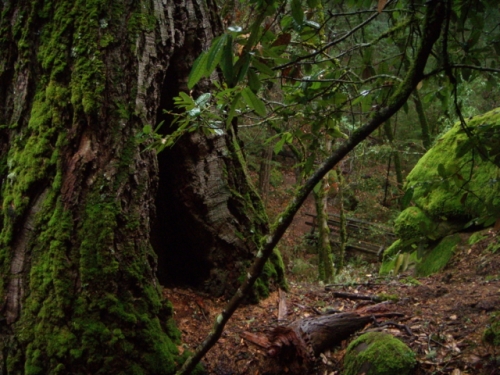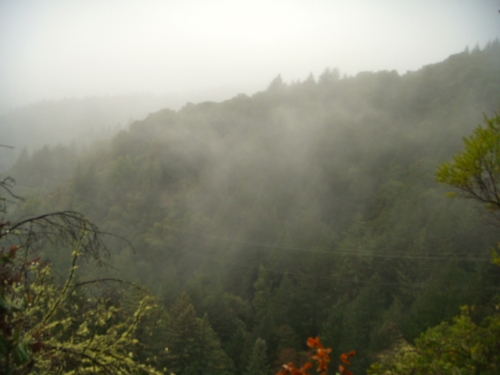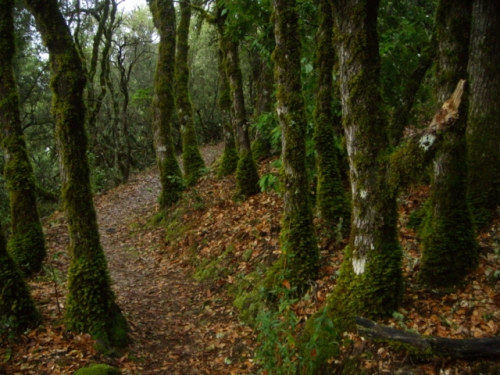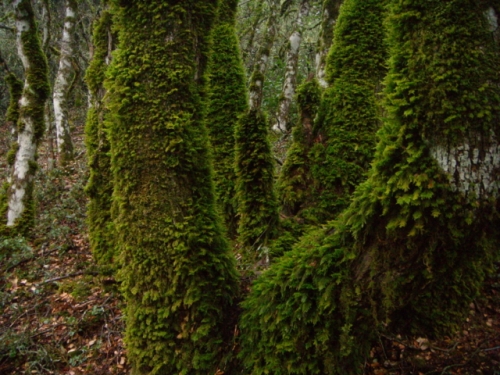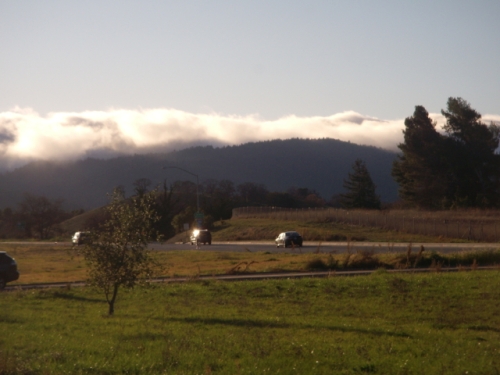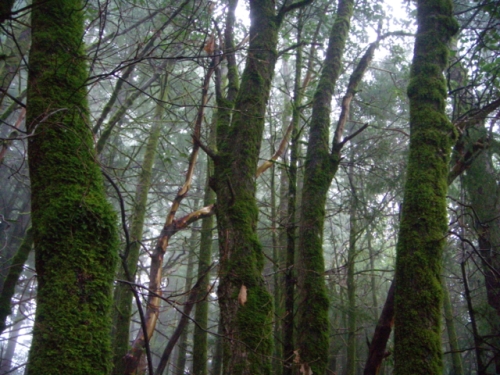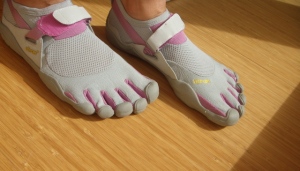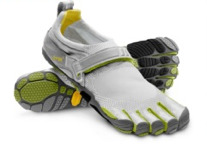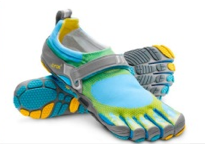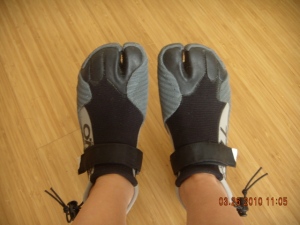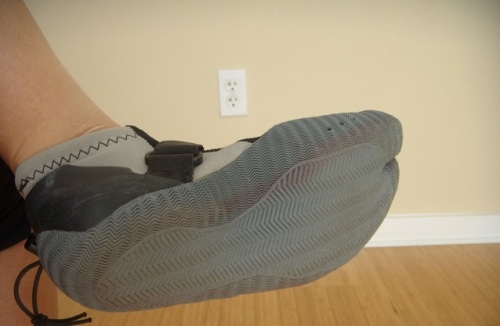by a beginner LD trail runner run-hiker
Weeks ago, a runner friend Loree from our Trail running group asked me if I would like to join her on one of her Western States (WS) training runs to prepare prospective and registered runners for the actual WS 100-mile race in late June. The runs took place this past Memorial day weekend “to acquaint runners with the last 70 miles of the trail.” Over three days, there were runs of 32, 20, and 20 miles over mountainous terrain, respectively. As a show of support for her upcoming race, my spouse John and I signed up for one of the shorter and “easier” training runs. We also thought it would be nice to give Loree a break from driving and run with her for part of the way. As training for this race, Loree had originally planned to commute to each day’s run and run all of them.
To give you an idea of how hard it was for Loree to gain entry into the actual 100 mile WS race: one must complete one of the listed qualifying runs under a stated finishing time of ultra distance. An example of one of the minimum requirements: “50 miles in under 11 hours.” If a runner qualifies, then there is a lottery for new runners to enter, according to the WS website and “odds work out to about one chance in ten (10%) for those with one name in the Hat.” Anyone who gained entry, as people have commented, received the golden ticket.
The day one training run was not only long, but also had the two highest climbs and started at ~9,000 feet. The day two run, which according to the elevation chart, was a net downhill full of ascents and descents with three miles of climbing at the end. It started at a much lower elevation than the day one run. I believed we could do the day two run it because we’ve been training on hills in our local Redwood and Miller parks. Our longest local training runs in the past couple months were ~20 miles with climbs of up to 1500′ at a time, and we had run hilly trail marathon distances prior to that during the past year.
The WS training run seemed like a good peak run, prior to our upcoming 20-26 mile run in Tahoe three weeks after. They both take place in the Sierra mountains. After we signed up, I read that it was the hottest part of the course because of the reflection of the sun off the canyon wall. Then I looked at the weather forecasts and saw that it would be close to 80 degrees F. Uh oh. We had some heat training in the past month, but mostly run in the morning in the bay area when the temperature is often in the mid-50s F. It looked like John and I unwittingly signed up for the hottest run.
Prep
Despite all that, I was secretly excited. Though we would “only” run 1/5 of the WS course (as our fellow running club member Colin pointed out smilingly) and it was on a lower elevation, I was looking forward to seeing part of one of the premiere ultra courses in the world, as I had experienced it in my mind through the narrative in the best-selling book Born to Run by Chris McDougall. I had read it when I started trail running a few years ago and it kept me from quitting numerous times. The visions of the senior Tarahumara people in their 60s running ultras I think will keep the bar high for me until I pass into the next life. Deep down I knew that signing up for this run was equal to signing up for the pain cave for a relative beginner like me. Recalling the book’s nail-biting narrative of a past WS race somehow shifted the focus from my fear of the upcoming training run.
I also focused in on the minutia of prep, which is always a good thing for me to help stop worrying about upcoming run challenges. I trained with a weighted hydration pack, which was new to me, but essential for mountain running. The day before the training run, as per Jane, a runner friend and former competitive cyclist, I filled my hydration bag 3/4 full and froze the water in the freezer to help keep me cool for the upcoming run. I packed our sun hats with attached skirts (friend Nick calls them our foreign legion hats), bandanna to act as an ice collar if needed, sunscreen, food, Clif shots, Vega sport bars, salt sticks, post run food and chocolate milk. We laid out our trail running clothes and shoes. I taped the aid station cut-off times to my watch. (If a runner doesn’t make the cut off time, she is out and must catch a ride back to the start with the volunteers.)
Run day
We left the home in the darkness at 5:00 am to pick up Loree, who was amazingly energetic and regaled us with stories of her previous day’s 32 mile run in rain, snow and hail, with black bears warnings, on the 2.5 hour ride to the edge of Tahoe National Forest to a town called Foresthill. I marvelled at her capacity to stay awake the day after an ultra distance run.
When we arrived, I did the ritual: put on the gear (sun protection, pack, hat, shoes). We signed in and received our paper bracelets with our numbers on them, which the volunteers checked at each aid station. As I looked around, I observed a group of the most fit runners of all ages (~20s to 80s) I have ever seen up close in my life, with their compact, stream-lined hydration packs. It was like this episode of Star Trek: Next Generation where the Enterprise lands on a planet of fit people and everyone dresses like Greek gods and runs/jogs from place to place. The run started with a guy saying “Go” and a cow bell. The super group ran down the road to the trail head, which I was surprised to find was the entrance into a mountainous region (taller than the expected “foothills”).
There was miles and miles of descent, to the degree I had never experienced before as someone unaccustomed to mountain running. It was foggy when we approached the town, so I did not notice until we were running the soaring peaks of the pine-covered mountains until we were running. (According to the WS guide, this part of the course is considered “fairly gentle terrain.”) I did my best to keep Loree in site and had already told her a few times to drop me if needed, because I was new to the heat. (Plus, of course, she is faster and stronger than I.) My quads were stunned and I tried, as advised to maintain light, quick foot falls, and not pound down and stress out my legs. Surprisingly, I forgot about the load on my back, which I was still fairly new to carrying and enjoyed the cool green pine forest and it’s smells, but the rocky descents lasted long for me with scant time for my legs to have a break and recover.
First aid station
I was relieved to have made it to the first aid station 8+ miles into the day’s course, 40 mins ahead of the cut-off time. There were bananas, pretzels, sports drink, and all the usual fare neatly arranged on a table with the most professional and fit volunteer staff I have ever seen at a trail event. My petite self walked up to a very tall, super fit man with a mustache, wearing a shirt and track pants. He was holding a pitcher of water. I spoke to him at chest level asking for some water please. Loree commented that the man who gave me water was five-time WS champion Tim Twietmeyer, who was volunteering at the aid station. Far out!
After the beautiful forest and pines, we ran by a canyon wall, which as expected, reflected the heat from the sun onto the runners. I slowed down, warned myself not to get too over-confident, and braced myself for the rising temperatures. I saw a group ahead and we all steadily ascended the hills as we headed to the second aid station with a roaring river with rafters down below, which I just wanted to swim in. A few groups of good runners ran by us from the opposite direction, ascending at a steady, strong pace. I wondered if they were doing today’s course twice for practice. Loree dipped her bandanna into a stream and the rest of us followed suit, wrapping the ice-cold cloth around our necks was refreshing. After running parallel to the river among wildflowers, we hit a dirt fire road and it was amazing to be able to open up, stretch the legs, and run at a steady pace with Loree, which lasted until the next aid station.
Second aid station
Another amazing professional crew of people were ready with sports drink, aid station fuel, and ice to dump into our hydration bags which felt so absolutely amazing. This was the point at which, in the actual race, Loree and the other runners would have to branch off and cross the ice-cold river, some during the day and some at night. Instead of heading toward the river, which many checked out in preparation, we headed up the road of “White Oak Flat” for three up mountain miles to the end. I felt strangely cavalier after I read the name, then could not for the life of me understand why someone named this Flat. It was an ascent that felt like the longest three miles of my running life. Soon I asked Loree to please meet me at the top so I did not hold her back. It was one of the places for me to learn humility and grace as an 80+ year-old man encouraged me and said only 1.5 miles of the climb left as he motored by. This was after I was informed that he had started running at age 47, had surgery at some point and also ran the arduous Leadville 100.
I felt myself pushing my upper limits and approaching the crying point for my legs. I stopped and stood under the shade of a tree until my heart rate dropped a bit. I sucked air out of the hydration tube and realized I was out of water. Resigned to the heat, I shrugged and moved on. I let go of thinking that based on x number of minutes on my watch that the end was around the corner. It took me an hour to climb out of that “Flat.” Loree was at the top, looking absolutely great and relaxed. I was relieved to see her and dragged my legs up to run with her to the end, where they would clip our bracelets and check off on their lists that we made it back alive. John was already there as expected, waiting for us at the final aid station. I ran to the shade of the aid tent, drank a bunch of water, grabbed grapes and followed Loree and John to the bus stop. Runners in fine shape milled around, grazing as we all waited for the bus ride home.
Lessons learned
It was the hardest continuous 20 miles that I’ve ever run because of the continuous mountain ascents and descents, my legs did not get the breaks for which they were accustomed from “local” hill training. As soon as we arrived back at the car and changed, I forced myself to stretch gently and do my leg swings before sitting for the 2.5 hour ride home. I drank my usual recovery chocolate soy milk. It was windy outside, so we sat in the car and ate PBJ sandwiches and sweet potato chips. The temperature display said 80 F. As we rode off, I realized that my quads were crying. It was a long time since (at least since I just started running just over a year ago) I’ve had that sensation. I mixed some Vega Sport Accelerator with water (vegan version of Accelerade) and forced myself to drink it. I almost immediately felt better and am now convinced that recovery potions like this work.
Loree directed us toward our food stop for tasty healthy food at the Co-op in Davis. On the way back to the bay area she recommended 50 mile races — though we have not even run a 50k yet! (At present, I think I am too vain to run more than 50k. I already have toe nails that seem to be falling off.) All in all it was a good learning experience in mountain running for me. I will read the WS guide again before our next mountain training run in Tahoe next month. It was nice to have any remaining traces of romantic ideas about the WS adventure beaten out of me in only 1/5 of the course. The amazing athletes and volunteers were super, super nice and this is what makes trail running special. Great run Loree and John. She really looked steady and great out there after running an ultra in a storm the day before. Thanks Loree for being an inspiration and John for getting us to the food stop and home safely!


